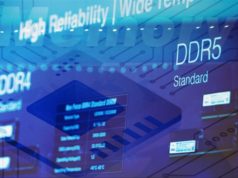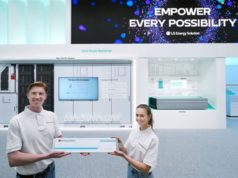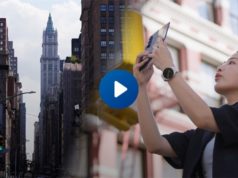If a simulation by the Center for Naval Analyses (CNA) has it right, mankind is inching toward a dystopian future where food shortage will trigger riots and wars. That might be stretching it a bit, but the upcoming food shortage crisis is serious, and the CNA, a federally funded research and development center, believes food production will permanently fall short of consumption.
With the UN estimating an extra 2-3 billion mouths to feed by 2050 and climate change undermining crop production by 2 percent per decade, the prospects of preventing the crisis in time look bleak. Meanwhile, with urbanization of life and more humans moving to live in cities, there will also be a workforce shortage on farms.
This is not the first time we humans are dealing with famine and food shortage. We’ve been fighting it our entire history. In previous eras, inventions like fertilizers and mechanized farming helped us find ways to tap into more resources and produce more food to address our needs.
But now, resources are becoming more scarce, and we need breakthroughs that will help make more efficient use of whatever we already have at hand.
According to scientists, the answer might be found in a new age of digital technologies that have proven their worth in different fields and have the potential to transform agriculture and food production and meet the consumption needs of the growing human population before we’re driven to eat cockroaches — or worse, each other.
Connecting the dots with precision farming
Traditional agriculture is based on performing particular tasks, such as planting and harvesting, based on a predetermined schedule. Under this model, there’s minimal control over damage and waste.
However, recent technological advances have gone a long way toward making “precision farming” possible, which involves gathering real-time data and obtaining actionable insights that can specify what exactly needs to be done at each location at any given time.
“Precision Agriculture can transform the food industry to be more efficient, less costly, and more sustainable,” says Paul Chang, Global Supply Chain Expert at IBM. “By utilizing IoT platforms to gather various sensor data and integrate with predictive analytics, the industry can take actions to maximize yield, minimize losses, and ensure sustainable practices.”
“Digital advancements in technology are able to make agriculture more productive and can help stabilize crops,” says Kai Goerlich, Digital Futures Research Director at SAP. “Sensors and real-time analytics can be used to optimize the planting, growing, harvesting, and transporting of food commodities.”
One such platform is SAP’s Digital Farming, which connects farmers, agricultural manufacturers and suppliers alike. “Crucial data from across entire farms are now collected and analyzed by a single cloud platform, which makes farming more efficient and sustainable,” Goerlich says.
“Today’s large and local farms can leverage IoT to remotely monitor sensors that detect soil moisture, crop growth and livestock feed levels, remotely manage and control their irrigation equipment, and combine operational data with third party information,” says Will Yapp, Vice President of Business Development at Senet, a manufacturer of IoT sensors.
This is not the first time we humans are dealing with famine and food shortage.
The combination, Yapp says, offers new ways to use empirical data to improve operational planning and decision making.
Senet’s sensors operate over Low Power, Wide Area Networks (LPWAN) to reduce the costs of deployment and connectivity over long ranges. “[LPWAN sensors] are ideal for gathering data about local agricultural and environmental conditions supporting IoT applications designed to increase the quality, quantity, sustainability and cost effectiveness of agricultural production,” Yapp says.
The data generated by these sensors can be used to improve precision farming, such as applying water to areas where the moisture of soil has dropped instead of wasting water in areas that don’t need it, Yapp explains. “An IoT-managed watering system can considerably decrease consumption while at the same time increasing yields,” he says.
IBM’s Chang also presents scenarios where emerging technologies can help unlock the power of precision farming, such as the combination of video-capturing drones and cloud-based analytics software that can show the current conditions of crops and assist farmers in taking actions that can impact the growth curve of the crops.
Leveraging weather forecast data
Being able to integrate weather forecasts into the farming process is also a vital component of precision farming. “Precisely monitoring incoming weather condition can help ensure that water is only used when necessary,” Chang says.
“Ninety percent of all crop losses are due to weather,” adds Carrie Gillespie, Agriculture Lead for The Weather Company, an IBM business. This is especially important as climate change is starting to take its toll on crops and farming in different areas across the world. “By integrating weather forecast models into crop planting and harvesting, better decisions can be made in advance,” Gillespie says.
The Weather Company helps farmers be more efficient and profitable in the field by leveraging micro-weather data for predictive modeling in the cloud.
Being able to integrate weather forecasts into the farming process is also a vital component of precision farming.
The correct use of weather and soil data can give insights into when and how much to irrigate, or how to increase crop yield while reducing the use of pesticide and fertilizer, Gillespie explains.
The use of analytics and machine learning technology can also enable disease and pest prediction and help growers prevent the loss of crops and tune their use of chemicals.
This practice is being applied by Seven Springs Farm in Cadiz, Kentucky, which uses cloud-based software systems hosted by tractor manufacturer John Deere to improve its corn crop yield. “The farm uses an app to calibrate fertilizer purchases according to weather predictions, reducing runoff,” says SAP’s Goerlich, whose company is involved in the initiative. “We have also seen an increase of agricultural institutes implement apps to assist with weather predictions that in return create a greater amount of crops that are safe to consume.”
“The ‘art of farming’ should be augmented with the ‘science of farming’ where the farmers can use data and predictive analytics to make the best decisions,” Chang says. “These technologies can now be easily consumed by individuals by leveraging mobile devices so that everyone in the world, including those in the developing countries, can have access to the latest technologies available to others.”
Improving distribution and optimizing the supply chain
Integrating weather forecasts into the agriculture process also helps improve the logistics around harvesting and transportation. Weather and soil analytics can predict and specify when fields will be least affected by the weight of harvesting equipment and which fields workers should be deployed to. It can also help predict which distribution routes will be affected by rain and upcoming weather changes, especially in countries where roads are dirt and heavy rain can cause trucks to get stuck in mud.
“A lot of food waste happens during distribution, so it’s important to transport the food at the right temperature and not hold it for longer than needed,” Gillespie says.
Product recalls also contribute to damage and waste — and they happen a lot. As studies suggest, in many cases, up to 50 percent of recalled food items are not contaminated, which ramps up costs and causes a lot of good food to go to waste. The reason is that there isn’t enough visibility into the supply chain. Federal regulations mandate that firms have traceability one step up and down the supply chain, but this isn’t sufficient for food items and perishable products, which move very quickly across the chain.
“In a recall, understanding the origin of the contamination and its reach is critical in helping to prevent untainted product from being wasted and discarded unnecessarily,” says Dean Wiltse, CEO at FoodLogiQ, a software company that helps promote food safety through traceability and sustainability.
Resources are becoming more scarce, and we need breakthroughs that will help make more efficient use of whatever we already have at hand.
FoodLogiQ aims to provide increased visibility across the supply chain by capturing and storing data at each step of the journey, and providing customers with an interface that enables them to scan products and gain immediate access to their supply chain history, as opposed to the traditional manual processes and spreadsheets involved with supply chain management.
“End-to-end traceability minimizes food waste in product recalls by helping companies realize efficiency and uncover visibility across their supply chain,” Wiltse says. “End-to-end traceability can help identify the source of the outbreak, trace back each step in the supply chain — all the way to the exact farm, batch, and container.”
The streamlined supply chain management will help avoid discarding uncontaminated food, Wiltse believes, and also prevent delays that can impact food quality.
On-demand food printing
In the near future, we might be producing our food in a totally different way, suggests Jordan French, CMO at 3D food printing startup BeeHex. “3D printing technology constitutes the perfect opportunity to eliminate inefficiencies across the food market by dramatically reducing food spoilage during the supply chain while bolstering the consumer’s ability to personalize according to her wants and needs,” he says.
While food printing is often viewed as a luxury technology, French explains that it has…






